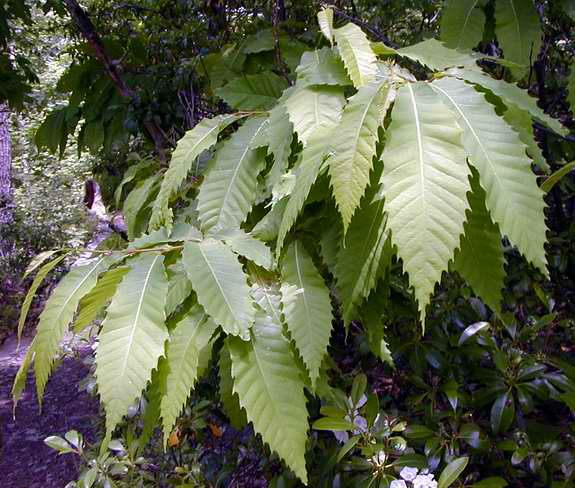|
Common Name: American Chestnut (French chesteine nut, from the genus Castanea) Scientific Name: Castanea dentata (The Genus is derived from Kastanea, a city in Turkey; dentata is Latin for toothed and refers to the serrated leaf edge). Potpourri: The American Chestnut was once so widespread that the Eastern deciduous forest was collectively known as Oak-Chestnut. In 1904, a fungus was discovered on the chestnut trees of the New York Zoological Garden. It is speculated that the fungus was introduced from the blight-resistant Asian chestnut tree imported as nursery stock in the 1880's. The blight, now known as Cryphonectaria parasitica, propagates as a spore that enters the tree through the bark and forms cankers that spread into the wood, killing the tree in several years. The root structure is not affected, however, so sprouts continue to grow, but they eventually succumb to blight. To try to combat the scourge, Congress appropriated funds in 1911, but tree surgery, chemical sprays, fungicides and, finally, the cutting of isolation strips across the Appalachian Mountains were to no avail. By 1940, over 3 billion trees, once comprising 50% of the timber industry, had died. The economy of the Southern Appalachians was devastated. The lightweight, decay resistant chestnut wood had been widely used for railroad ties, posts and cabins; the bark was stripped to extract tannin for the leather industry; the nuts were harvested by the bushel to sell or were used by the mountain people as an important local food source. There has been a serious effort to reestablish the American Chestnut for the last fifty years. Asian trees are cross bred with American trees to try to produce a hybrid that is resistant to the blight. Hypovirulence, a viral disease of the blight fungus is also being investigated as a biocontrol. |
